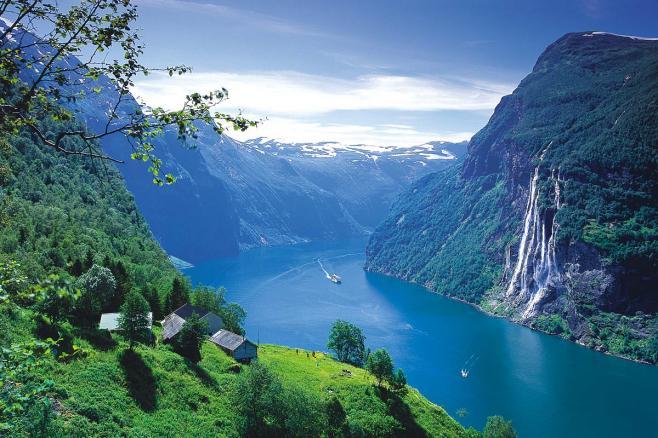 The name Norway means "Road to the North", and as you travel from south to north you will experience the diversity of the landscape, culture and history. There are fjords here, mountains, waterfalls, small and large islands between the mainland and the untamed sea.
The name Norway means "Road to the North", and as you travel from south to north you will experience the diversity of the landscape, culture and history. There are fjords here, mountains, waterfalls, small and large islands between the mainland and the untamed sea.
National wildlife parks and glaciers, white nights and aurora borealis, cities and towns with both historical and modern culture. Have a nice trip!
Norway borders Russia to the east, Finland and Sweden – and to the west with the Atlantic. Due to the fjords, Norway's coastline has over 20 000 kilometers. The distance between the southernmost point (Lindesnes) most to the north (North Cape) point, is 2518 kilometers. Archipelag Svalbard, Bjornoya and the island of Jan Mayen also belong to Norway.
Most of the population lives in the southern part of the country, and the density is greatest around the capital of the country, Oslo. Thanks to the warm sea current from the Gulf of Mexico, zwanemu Prądem Zatokowym, it is possible to inhabit latitudes, which in other parts of the world are uninhabited.
In Norway, the differences are large – both in summer and winter. Departing from the coast with a mild climate and heading inland, you will quickly reach the high mountains, where the weather conditions are much more severe.
The shoreline is punctuated by narrow fjords, which even cut into 200 kilometers inland. These tight fjords, with mountains steeply uplifted from the water to a height above 1000 meters, are among the greatest tourist attractions of Norway.
The landscape of eastern and central Norway is milder, Northern Norway, on the other hand, welcomes you with its beautiful and raw nature. Here, in the summer semester, white nights give light around the clock, and it is dark in the winter half-year, O, punctuated by a small flash of light in the middle of the day.
